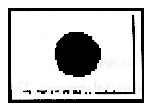
| |||||||||||||||||||||||||||||||||||||||||||||||||||||||||||
(1) |
根据第一段where able and disabled persons, and people as young as 5 years and as old as 80 years of age can participate alongside each other.可以确定A、B、C三个选项的三种人都可以和你一起去water skiing。 |
(2) |
第二段最后一句with each of these practiced for either recreational or competitive enjoyment.说明该选项陈述错误。第二段第一句说明A项正确; 最后一段说明C项正确;倒数第四段说明D项正确。 |
(3) |
根据倒数第三段NEVER ski after dark.It is dangerous AND illegal.illegal意为“不合法的”,A项是在做此运动是对observer的要求。B、C虽然是不好的做法,但文章并没有说违法。 |
(4) |
A项不能体现作者的全部意图,从第三段开始作者向读者陈述危险隐患,所以也不能作为作者写这篇文章的目的;至于C项,根据第一段作者介绍这项运动可以让任何人参与,并非动员所有的人参加。D是最后一段的细节,不能作为全文的写作目的。B项中的properly and safely含盖了其它三个选项中作者提出做此运动的建议和要求,因此选B最为合适。 |


科目:高中英语 来源:2004年高考红皮书·英语 题型:050
阅读理解
Flags have existed for over 3000 yeas. The earliest flags were wooden or metal poles topped with a carving. About 2000 years ago pieces of fabric were added to some poles for decoration.
Over the next 500 years the free-flying part to the flag became more important.
Every country today has its own flag. Many groups and organizations also have a flag which stands for, or symbolizes, the aims of the group.

The United Nation The flag depicts a world map, centred on the north pole. The map is surrounded by an olive wreath, symbolizing peace and cooperation. The flag is blue and white.

Nepal This is the only national flag that is not a rectangle. The white shapes represent the sun and moon.

Singapore The five stars stand for five ideals: democracy, peace, Progress, justice and equality.

Japan The central red disc of the sun represents sincerity and passion. The white background represents purity and honesty.

Cambodia Three towers of the famous temple of Angkor Wat feature on this flag.

Bhutan The wingless dragon is the national symbol. Bhutan means “Land of the Thunder Dragon”.
1.A very old flag is likely to ________.
[ ]
2.An olive wreath is used to represent ________.
[ ]
3.Two flags that include the sun in their design belong to ________.
[ ]
A.Nepal and Japan
B.Singapore and Japan
C.the United Nations and Nepal
D.the United Nations and Singapore
查看答案和解析>>
科目:高中英语 来源:全优设计必修二英语北师版 北师版 题型:050
| |||||||||||||||||||||||||||||||||||||||||||||||||||||||||||
查看答案和解析>>
科目:高中英语 来源:2010年普通高等学校招生全国统一考试、英语(全国一) 题型:050
| |||||||||||||||||||||||||||||||||||||||||||||||||||||||||||||||||||||||||
查看答案和解析>>
科目:高中英语 来源:2010年普通高等学校招生全国统一考试、英语(新课标全国卷) 题型:050
| |||||||||||||||||||||||||||||||||||||||||||||||||||||||||||||||||||||||||
查看答案和解析>>
湖北省互联网违法和不良信息举报平台 | 网上有害信息举报专区 | 电信诈骗举报专区 | 涉历史虚无主义有害信息举报专区 | 涉企侵权举报专区
违法和不良信息举报电话:027-86699610 举报邮箱:58377363@163.com